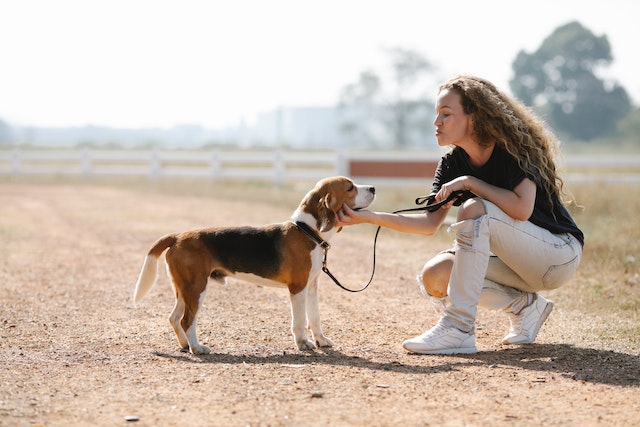The number of pet owners in the United States is always rising. As of 2024, a remarkable 66 percent of U.S. households own a pet, a significant increase from three decades ago, when only 56% of households had pets.
This means that demand for pet-friendly rentals is also increasing. You, as a landlord, may be able to capitalize on this opportunity by making your rentals pet-friendly.
That said, making your property pet-friendly isn’t without its cons. You have to deal with things like noise complaints and pet damage.
Luckily for you, it’s possible to overcome those challenges by screening prospective pets. This way, you’ll be able to significantly reduce the chances of landing a problem pet on your rental property, minimizing risks to your bottom line. Keep reading this article to learn more!
Benefits of Allowing Pets On Your Rental Property
Long-Term Tenancies
Successful landlords often share a common trait: they have high lease renewal rates, often leading to long-term tenants. This means your rental property stays occupied most of the time, resulting in increased rental income.
Welcoming pets to your rental property can be a great decision! Since pet-friendly rentals are rarer, there’s a high demand for them. Tenants with pets often stay longer, especially if they feel their furry friends are happy and well-cared for.

More Rent
By making your property pet-friendly, you could increase your lease rate, especially if there are few pet-friendly options in your area.
Additionally, you could consider charging tenants a pet deposit or pet rent. However, ensure compliance with discriminatory and retaliatory laws. Regardless, make sure to abide by discriminatory and retaliatory laws.
Responsible Tenants
Looking after a pet is no small feat. It requires an immense level of care and dedication. Similarly, responsible pet owners are more likely to be responsible with the homes they rent.
What Does Pet Screening Involve?
Just as you carefully screen prospective tenants, it’s important to screen their pets too! This helps you evaluate if the pet is suitable for your property, avoiding pets with destructive or aggressive behaviors. Proper screening includes checking the pet’s health, personality, and behavior.
When it comes to pet screening, you have two options to consider. The first option is to do the screening yourself. The other is to hire a qualified expert to do it on your behalf. It could be an experienced property manager, for instance.
If you choose to go it alone, the following are a few things you’ll need to incorporate into your screening criteria:

Screening Questions
This is a good place to start your screening process. This will give you a broad overview of the prospective pet. Below are a few questions you can ask the prospective tenant about their pet.
• What breed is your cat or dog?
• How old is your pet?
• How long have you had the pet?
• Is your pet vaccinated? Can you provide any proof?
• Do you have a letter from your pet veterinarian confirming that your pet is in good health and has current vaccinations?
• Is your pet aggressive?
• Have you house-trained your pet?
• Has your pet ever shown behavioral issues?
Specific Questions to Ask Dog Owners:
• Is your dog neutered? If not, when are you planning to do so?
• Have you taken your dog to any training classes? If not, when are you planning to do so?
• Do you put your dog on a leash when taking them for a walk?
• How long does your dog stay alone per day?
• Do you immediately clean up after your dog?
Specific Questions to Ask Cat Owners:
• Is your cat neutered? If not, when do you plan to do so?
• Does your cat stay indoors?
• Have you trained your cat to use a litter box?
• Have you registered your cat?

In-Person Pet Screening
While a questionnaire can give you a basic idea about the pet, meeting them in person provides a better understanding. This personal interaction helps ensure the pet is the right fit for your rental property.
It’s important to note that you may not get a perfect overview of the pet during the first meeting. Pets can be nervous, and their behavior may not reflect their everyday demeanor.
Pet Clauses in a Lease Agreement
If you’ve decided to allow pets into your rental property, you want to include certain clauses in the lease agreement. This will help outline your expectations to the tenant regarding several issues.
While the pet policy doesn’t have to be extensive, at the very least, make sure it includes the following.
• The types of pets you allow into the property. Examples of common pets include dogs, cats, and fish.
• The number of pets allowed into the property.
• Whether pets should be vaccinated. Be clear on whether the vaccinations should be up-to-date.
• Responsibility for pet damage.
• Responsibility for cleaning up after a pet.
• When the pet should be on the leash.
• What happens if the tenant violates the pet policy?
Additionally, you may also want to state whether you’ll be charging the tenant any extra charges, such as pet deposits or pet rent.

Hire a Property Manager
Similar to screening prospective tenants, screening pets can be time-consuming. As such, it may be a good idea to hire a professional to do it on your behalf. A good property manager will help you draft a proper lease policy, conduct pet screenings, and even manage tenants, among other things.
Conclusion
Pet screening is always a good idea! By choosing the right pet for your property, you’re able to reduce the risk of property damage, minimize noise complaints, and increase revenue potential, among other benefits.
For expert help, look no further than Young Management. We’re a top property management company in Kansas City, MO. Get in touch to learn more!

